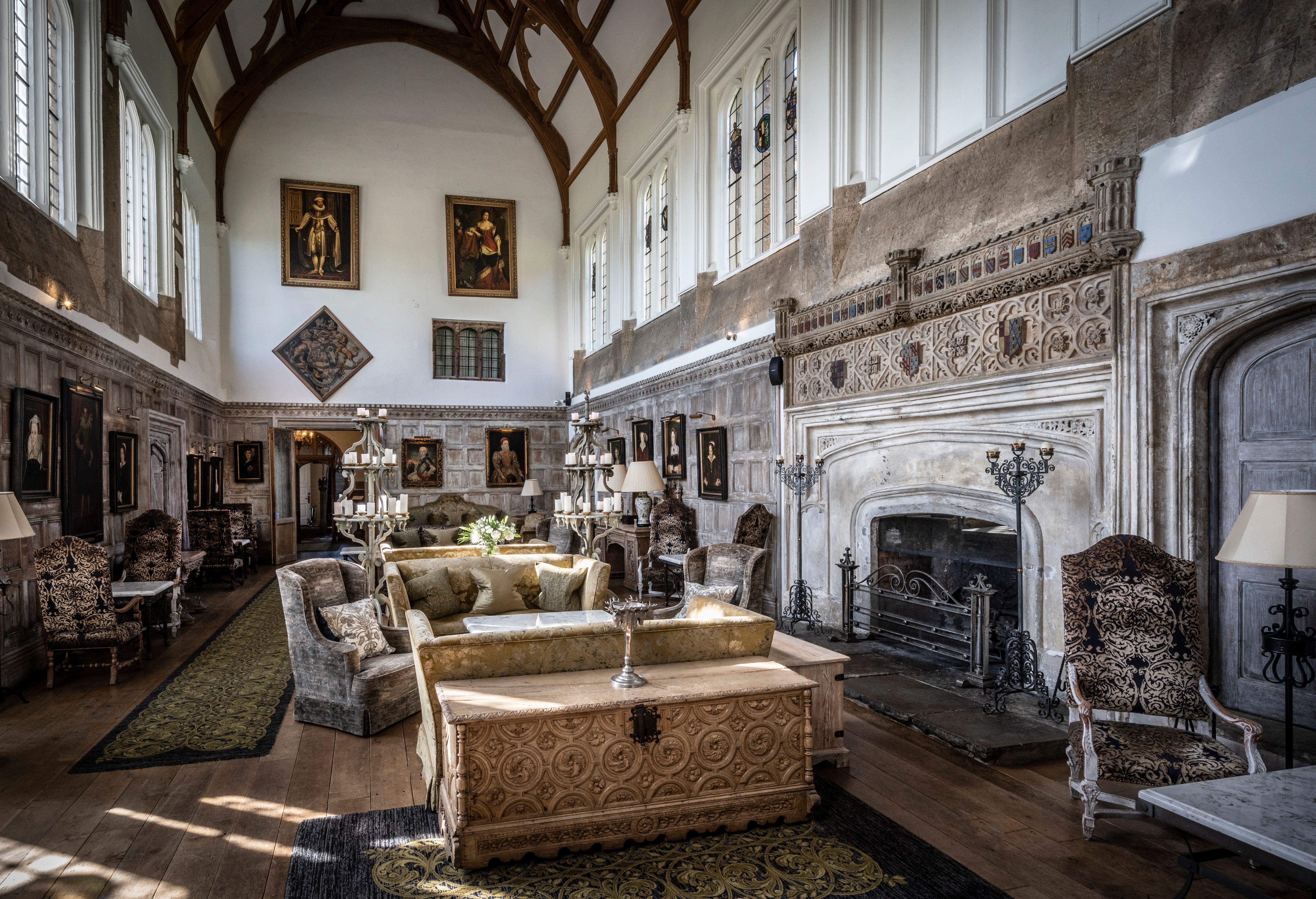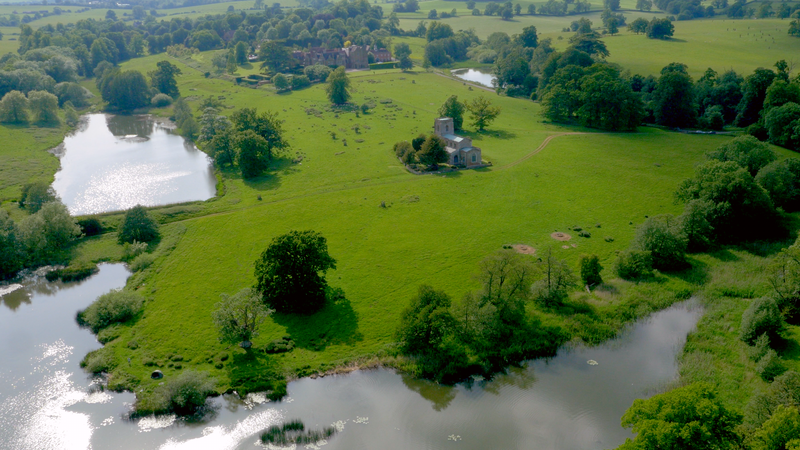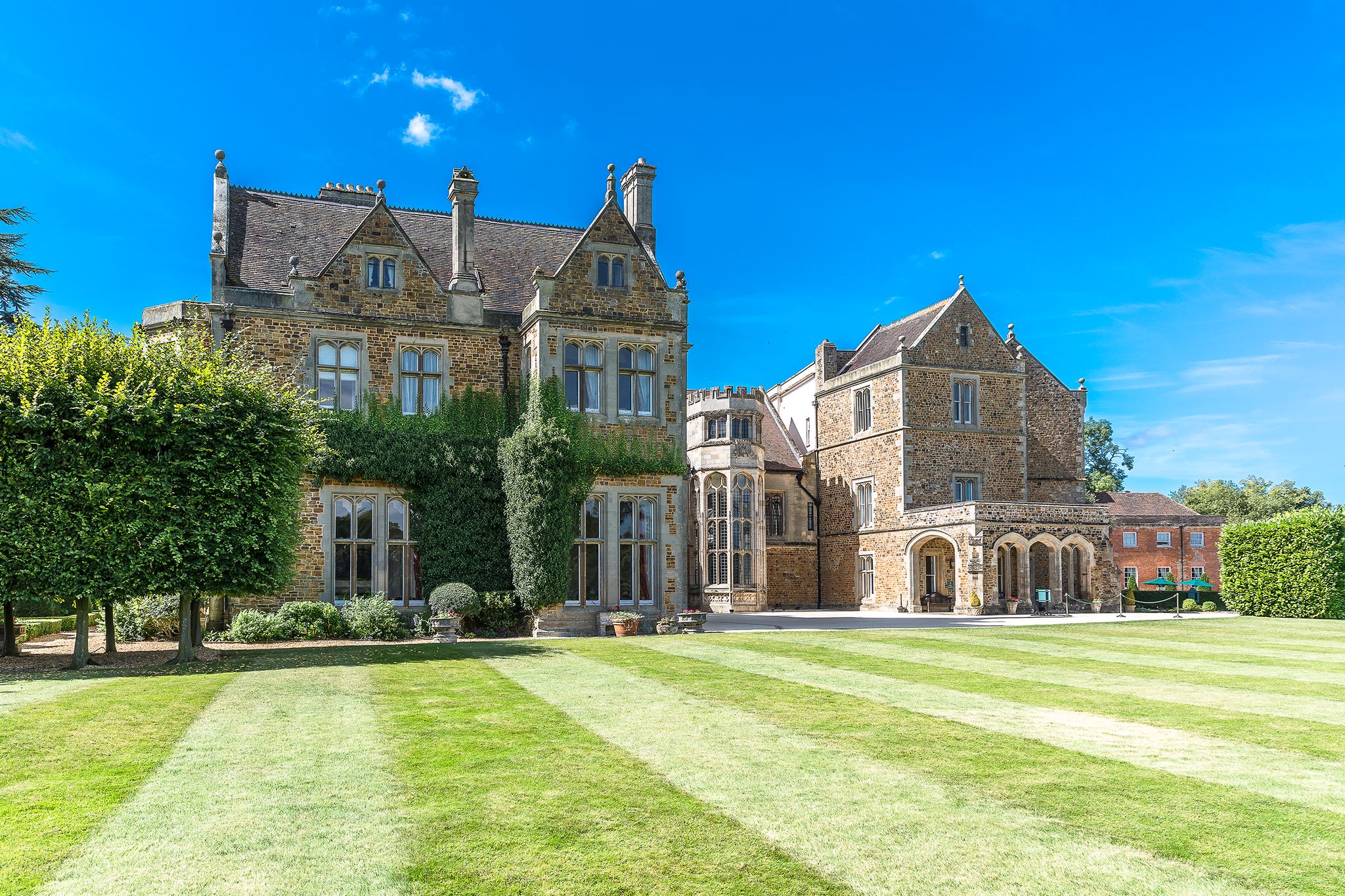Before the Knightleys
Fawsley was a Royal Manor as early as the 7th century, it being the headquarters of administrative and ecclesiastical matters for 12 settlements. A land charter of AD944 records a gift of some land adjoining Fawsley by King Edmund to Bishop Aelfric.
In 1224 the King granted the holding of a weekly market and the population had grown to its zenith by the 1340s, before the Black Death wiped out between one third and one half of the population. Poll Tax records show that there were only 200 residents left in 1377. The site of the village was in the field around the Church of St Mary. On the other side of the lake, the ridge and furrow created by the early single plough is particularly well preserved and is best viewed when the sun is low in the sky.
The Knightley Family
The Knightleys came over to England with William the Conqueror and settled in the village of Knightley in Staffordshire, from whence the name comes. In 1416 Richard Knightley became Lord of the Manor of Fawsley. He was a successful Staffordshire lawyer and the family were hard sheep farming landlords. Richard Knightley later became the King’s Sergeant and Teller of the Exchequer. They developed the sheep farming at the expense of their peasant tenants, who were all evicted by the turn of the 15th century. Thus, the Knightley family wealth was assured for the next 300 years. Richard Knightley’s son, also Richard, was twice Sheriff and his grandson, also Richard, who through marriage acquired extensive estates, set about building the earliest part of the house,
the South Wing that exists today.
The Tudors
Henry VII knighted Sir Richard Knightley (third generation) in 1494 when Henry’s son was created Duke of York. Henry VIII knighted Sir Edmund Knightley (fourth generation) in 1542. Edmund, a sergeant-at law, enhanced the family wealth by being appointed a commissioner for the Suppression of the Monasteries and confiscating monastic lands.
Edmund held strong religious convictions, once trying to prevent Henry VIII from taking the son of his deceased brother in law (Sir William Spencer) into wardship. He was thrown into London’s Fleet Prison for his impudence. Edmund continued the building work at Fawsley with his brother Valentine and it was Valentine’s son who inherited the house, yet another Richard (died 1615). It was this Richard Knightley who entertained Queen Elizabeth I in 1575 in the South Wing. In an inventory of a family member who died in 1650, there is mention of the ‘Queens Chamber’, which is now our 1575 suite. Queen Elizabeth I often visited her courtiers during the summer months while her palaces were being cleaned.
The Puritans and the Civil War
Sir Richard Knightley (died 1615) was imprisoned for allowing the printing of Puritan material and there is little doubt that in the period leading up to the Civil War, the Knightleys were very much opposed to the unlimited power of royalty. The term ‘sub rosa’ is supposed to have originated here from the flower in the centre of the ceiling of the bay window in the Great Hall, above which is a secret room where meetings were held. On the eve of the Battle of Naseby, Charles I was seen hunting deer in Fawsley Park. This may seem curious seeing as the Knightleys were Parliamentarians but the Knightley family had leased out the house and were living in London at the time. Clearly the tenants were Royalists!
The Georgians, Victorians and Edwardians
Lucy Knightley inherited in 1728 and added the Georgian Wing in classical style. During this time the family continued to represent Northamptonshire in Parliament.
In 1798 Sir John Knightley, 22nd lord of the manor, was made the first Baronet. His nephew, Sir Charles Knightley, 2nd Baronet (1781- 1864) carried out the Gothic alterations to the Georgian Wing and his son Rainald III Baronet commissioned Anthony Salvin to re-model the North Wing. The Life Peerage, Baron Knightley of Fawsley, was created by Queen Victoria for Sir Rainald Knightley in 1892.
The decline of the family was dramatic. Rainald died childless in 1895 and his wife Louisa, extra lady-in-waiting to HRH Duchess of Albany, died in 1913 (the Duchess of Albany was the widow of Prince Leopold, the youngest son of Queen Victoria). There being insufficient capital for the will to be proved, the contents of the house were auctioned over a three week period in 1914. She was the last Knightley to live in Fawsley Hall. Her diaries are now out in book form called ‘The Journals of Lady Knightley’. Subsequently, when the penultimate baronet, Sir Charles Valentine died in 1932 and his brother, Sir Henry Francis died in 1938, the house passed to the Gage family of Firle Place, Sussex, because of the earlier marriage of Rainald Knightley’s sister, Sophia, to Viscount Gage. The Gage family still owns the former Knightley lands. Both Sir Charles and Sir Henry, who lived in the Stewards House, died childless, leaving a vacant baronetcy.
Fawsley Hall
South Wing
The earliest part of the house is the Tudor South Wing, built in the early 16th century. The hotel restaurant now occupies most of the ground floor of the South Wing. The early house is exceptional in that it contains two kitchens, each having a large back fireplace served by a common chimney. Above the kitchen, which has a door opening into the courtyard, is the room in which Elizabeth I slept during her visit in 1575.
Following the completion of the South Wing, three further wings were soon added. These were the Great Hall, Brew House and Gate House thereby forming an inner courtyard.
Great Hall

Sir Edmund Knightley commissioned the building of the Great Hall in 1537 in the traditional open hall style of the period. Its fine roof was removed in 1966 but was reconstructed in 1988 using an engraving from 1816 and a few surviving beams. These original beams are of much darker wood than the new beams, which otherwise are an exact copy. As you face the original Tudor fireplace you can see the coat of arms of the Knightleys and those of Richard I and twenty-six knights who accompanied him on his first crusade.
There was a large window with three lights above the fireplace with the smoke being carried by twin flues either side of the windows. The flues are still there but the three windows were covered over to allow the construction of a central flue. On high are the copies of the original exquisite stained glass panels, now in the Burrell Collection in Glasgow. The large aperture in the end wall to your right was originally a squint allowing observation by servants.
Immediately facing the fireplace is the large bay window with its fine carved ceiling. Above that ceiling, now inaccessible, is a hidden room, thought to be where Puritan material was secretly printed for which Sir Richard Knightley (died 1615) was subsequently imprisoned. It was reached originally by a spiral staircase outside, where the outline of the entrance archway can still be seen.
The family crest can also be seen above the window outside. The large shield in the Great Hall on the left by the bay window contains 334 quarterings of heraldry showing all the Knightley marriage alliances up to the 19th century.
The West Wing or Brew House
This was built around the same time as the Great Hall. The bar and lounge are located on the ground floor of this wing. It is constructed of golden Northamptonshire sandstone and contains a very fine oriole window on the upper floor at the north end. Not only was brewing carried out here but also the laundry and possibly a dairy.
Georgian North Wing
In 1732, Lucy Knightley commissioned the North Wing. It has been attributed to Francis Smith of Warwick, as was the very fine grade I listed red brick contemporary stable block next to it on the north side. The main house addition is three storeys and was topped with a balustraded parapet. In 1815 Sir Charles Knightley commissioned Thomas Cundy to remodel it in gothic style, which included demolishing part of the eastern end and replacing it with a three storey construction and a single storey porch for the new main entrance. Corner turrets were added at the top with battlements replacing the parapet.
Not to be outdone, his son Rainald III Baronet commissioned Anthony Salvin for a further remodelling of the wing in 1868. He removed the battlement, turrets and porch and replaced them with another porch, large enough for coaches to pass through.
The Victorian and South East Wing
In preparation for the wedding of Sir Rainald (later) Baron Knightley to Louisa Mary Bowater, Anthony Salvin was commissioned in 1869. His brief was to demolish the south-east corner of the house and build a two storey block including apartments above and two very large rooms on the ground floor. These are now the hotel’s main function rooms. Anecdote: Louisa, who had no children, befriended John Merrick, ‘the Elephant Man’ and provided him with a cottage on the estate.
The Parkland

In the 1760s and 70s Lancelot ‘Capability’ Brown, the landscape gardener, was engaged and
transformed the park by creating sweeping vistas, planting trees and laying lawns. Many of the trees planted can still be seen today.
The 20th Century
After the auction of its contents in 1914, the house was requisitioned by the army during the First World War and afterwards only skeleton staff lived there. The Gage family who inherited the house in 1932 already had a family seat in Sussex and had no need for another seat. It was again requisitioned in the Second World War, and in the 1950s and 60s a timber company leased the building as a workshop. Further deterioration occurred following the departure of the timber company.
In 1975 it was purchased by successful entrepreneurs and antiques dealers, Mr and Mrs E A Saunders. The monumental task of restoring the house continued until the recession of the late 1980s. Work restarted again in 1996 when a consortium, including the Saunders, reinvested in the building. Now, Hand Picked Hotels are the custodians of this magnificent country house, where guests can add to its fascinating history
